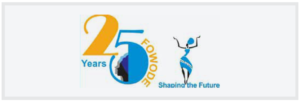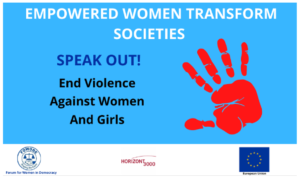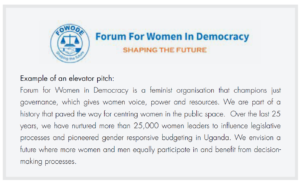TA-Area
THIS SPACE IS WHERE TECHNICAL ADVISORS FIND ALL THE RELEVANT INFORMATION FOR THEIR ASSIGNMENTS.
THIS SPACE IS WHERE TECHNICAL ADVISORS FIND ALL THE RELEVANT INFORMATION FOR THEIR ASSIGNMENTS.
A communication strategy is about how to make your cause known and how to build strong relationships with your resource partners. You can only procure resources from people (private individuals, foundations, corporates, etc.) who know and trust the organisation and share an interest in the cause the organisation works for.
Awareness and trust are built through sustainable, appealing communication. Resource mobilisation is successful when a relationship with each partner and donor is built and they feel appreciated individually. Relationships can only be built and maintained through engagement and dialogue (see Chapter 1, Donor Cultivation Cycle and Donor Pyramid). Timely, informative and appealing communications are prerequisites for strong resource mobilisation.
Communication is an integral part of the work organisations do and amplifying your vision and mission effectively is an important element contributing to resource mobilisation. The aim is to inspire the audience, instill a sense of urgency about the need get the work done, and to harmonise the efforts of external and internal stakeholders through increased understanding of the strategic direction the organisation has. A number of communication tools (from printed material to online channels) can help convey the organisation’s, programmatic and project goals as well as the impact in a concise and effective manner.
This chapter emphasizes the importance of developing a communication strategy for your resource mobilisation efforts focused on its target audience(s), key messages and media channels.
A communication strategy is fundamental to achieving the organisation’s overall mission, follows the organisation’s overall strategy and is also supposed to cover the same timeframe.
It should include the following basic elements:
The key to effective communication is to understand the audience, including what their needs are, how they prefer to receive messages and what their information and communication habits are (including media consumption, frequency, channels).
Your primary audience is hereby the audience that receives communication from you directly and is the most important audience for your message. They can be identified by analysing whose support you need in order to reach your goals. Content and style have to be developed around the needs of this audience. Your secondary audience on the other hand includes anyone who may indirectly receive a copy of the communication. Be mindful to be very precise in defining your audience. The more audiences you have with different needs, the weaker the message becomes.
Providing appealing and effective communication to the target audiences will ultimately help you to build trust between your organisation and your resource partners.
Effective communication aims to achieve the following:
You can clearly define your target audience by using the donor persona tool. Creating a donor persona means giving a detailed description of a person from your target audience. Imagine your best potential supporter and note down the characteristics of this person. It does not have to be a real person – a donor persona can be entirely fictional. Working with donor personas allows you to always check whether your messages are attractive to your main audience i.e. whether they satisfy their needs and wants.
Tool 5: Creating Donor Personas
When investigating your target audience, remember to always put your audience in the centre. Listen to your audience and research them well. Ask your audience what they are interested in and do not rely solely on assumptions. It is best to include different perspectives here, through interviews for example. Other means of research can include focus group discussions, expert interviews or secondary sources like websites and publications. You should also always work in a team to define your target audience, as this allows for different perspectives to be included.
Key messages are direct and concise sentences conveying the main points of information you want your audience(s) to hear, understand and remember. They articulate what you do, why you do it, what value you bring to stakeholders and how you stand out among other organisations.
Key messages clarify meaning and provide the takeaway headline of the issue you want to communicate. They are the foundation of an organisation’s branding and marketing efforts and should be reflected in all written and spoken communications.
A key message is not a short summary of your organisation’s vision and mission. It aims to give your audience quick answers why your message is relevant to them and makes them want to know more about the organisation and what you do. Additionally, a key message can influence how your audience feels about your organisation and your cause. Carefully, consider what emotions you want to create with your messages.
Your organisation’s various communication efforts should all be anchored in your key messages. All your interactions, whether with your external or internal stakeholders, and communication materials like brochures, websites, annual reports, press releases, newsletters, posters, etc. should, therefore, consistently convey your key messages.
Having a key message doesn’t mean you would be saying the same exact words over and over again – though that isn’t always such a bad idea. You can use variations and minor deviations, of course, to address the various types of audiences your organisation targets and varying circumstances. Having a key message simply means making a commitment to consistently communicate the most important message to your most important external, as well as internal, audiences.
Forum for Women in Democracy (FOWODE), an organisation promoting gender equality in Uganda uses the following visual and key message.

Source: https://www.fowode.org/
More than just informing your audience, you can also use your key message as a call to action. Think about what action you would want your audience to take. Should it be a change in attitude towards your organisation or actually giving a donation? Mention this action and make it easy for your audience to follow your call.
Key messages help you to…
When craftign your key messages ask yourself:
In a project working towards reducing gender-based violence, FOWODE applied one key message and two calls to action to mobilise citizens to take action:

Effective key messages are:
You can also embed your key messages in an elevator pitch. An elevator pitch is a very brief explanation that introduces your organisation, describes what it does and makes a compelling point as to why it is important. You can find guidance on how to develop an elevator pitch in our tool 4: Elevator Pitch

Next to key messages, it is also important to create an overall professional and memorable image of your organisation. The way and the consistency with which you use logos, colours, typefaces and images shows your audience the professionalism of your works. In short, your outside representation together with your key messages can help create your organisation’s brand. A clear branding will make it easy for your audience to relate your communication to your organisation.
Communication tools and channels are how you get the word out about your
organisation. Which ones you choose depends on your target audience and resources (time and money) available to you to ensure the receptivity and appropriateness of the messages for the target audience.
Decide which communication channels will best reach the audience. It is effective to use a variety of channels, keeping in mind that there is no one perfect channel. There are four broad categories of channels:
Your context, objectives, and target audience will determine what communication channels are most suitable. Ideally, you should aim at prioritizing two to four key channels, with a combination of oral and written channels.
Ideally, prioritize two to four key channels and combine oral and written channels. Here are some criteria that can help you identify the right channel for your target audience:
Strategies and tactics are how you actually implement your communications plan. They are directly linked to communications tools and channels. An effective communications program will have a mix of strategies and tactics, using a variety of communications channels. In general, most organisations rely on a strategic mix of face-to-face engagement including community events, press, and traditional media relations, advocacy work, and some use of social media – often with the support of their donors. Typically, several approaches will be used, either in a phased manner or at the same time.
Examples of approaches include:
When drafting this part of your communications plan, you must be realistic – while there are many strategies and tactics you might use, your organisation will have a definite budget and your staff may not include experienced communications professionals to do the actual implementation.
Consider what can be realistically done within one year. To be on the safe side it is best to focus your energy on strategies and tactics that you know you can achieve, and realise that you may be better positioned in a few years to take on additional tactics once you have raised your organisation’s visibility.
Under activity planning you develop a work plan. In the work plan you detail how you will apply and sequence the strategies and tactics, using the different communication channels selected to most effectively promote your message. In general, most organisations rely on a strategic mix of face-to-face engagements, community events, press and media relations, and some social media engagements for most effective advocacy and message amplification. Typically, several approaches will be used, either in a phased manner or concurrently.
Examples of approaches include:
When drafting this part of your communications plan, be realistic to stay within the budget available and the staff capacities to deliver, particularly if you do not have experienced communications professionals implementing the activities. At times, you may have to outsource tasks if the skill is not available within your organisation.
Consider the full communication strategy’s time frame and break down what needs to be done to achieve the objectives. Decide on the major steps for every year and also what can be realistically done within one year. In your yearly communication plan focus your energy on activities and goals which you can achieve. When clear processes and a solid information flow for sustained communications have been established and some experience gained, you will be better positioned to take on additional channels or tactics in the future.
The communication plan details the implementation of your communication strategy. It states who is responsible, what activities are planned for when and how much budget will be needed. Who will take the lead for each activity?
Think about who is responsible for:
Internal workflow:
You may need to use a variety of activities in order to roll out your communication plan. The activities might be one-time, periodic or ongoing.
When the overall strategies have been selected, the team can outline the activities that will be implemented per year to achieve the objectives. Activities should be specific and relate to each strategy. Some examples may include: developing a concept for a radio talk show series, implementing the radio talk show series, developing radio or TV spots and planning the airing schedule, working with a group of project participants to develop a music, dance and drama activity for community outreaches, planning on the number and location of community engagement, conducting a certain number of community discussion groups, designing and producing a radio serial drama, developing an app or designing or revamping the website.
See Tool 2: Communication Strategy Template: 6. Activity Planning
Use the communications plan template to strategize your communication efforts. This will help you to prepare in time for events or campaigns and to ensure to collect information in time for it to be ready when you need it. Consider the order in which different people will need to be informed to provide materials, input or make themselves available for activities. For example, staff may need to be trained so that they can inform others or change stories that need to be collected to be ready for the newsletter. Often, programmes need to inform community leaders and other community groups before implementing a project with the wider community.
When drafting a budget for your communications activities, you can follow the same process as when you budget for other activities. Your budget will influence what strategies you can pursue in your communication plan, especially if you want to involve mass media such as national TV. Keep in mind though that not all communication has to be expensive. There are many inexpensive ways of communicating such as sharing information at community meetings, creating posters and distributing them through friends, members and ambassadors.
Cost all the activities and ensure they fit into your budget frame. Consider which costs are actually under project and programme costs.
Ask yourself the following questions:
What does success look like and how will you know when the communication objectives have been met? Review your communication strategy during and after its implementation. Look for ways to improve. Did people receive your message? How did they respond?
Make sure to have tools in place to evaluate the effectiveness of the various elements of your communications. The review can be either a stand-alone activity or one part of an overall programme review. Before you implement your communication plan, you should decide with your team how and when to review it. This reminds staff that it’s important to learn and improve over time.
Measuring effective organisational communication is often not a common practice. Nonetheless, if your organisation is like most CSOs or NGOs, every resource is valuable – including your time and donor funding, so it is important to think about how you will measure the success of your efforts. One way to do it might be to define how you will measure your success (indicators).